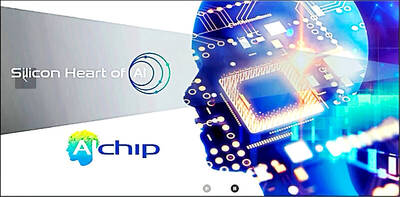Indian software services firm HCL Technologies Ltd said quarterly profits surged by 110 percent in dollar terms as media, infrastructure services and Asia-Pacific business pulled the company out of last quarter’s slump.
HCL said yesterday it earned 3.3 billion rupees (US$68.9 million) in net income in the quarter ended June 30, up from US$32.8 million in the same period a year earlier, a 110 percent increase in dollar terms. Revenue was 29.1 billion rupees, up from US$501.7 million a year earlier, a 21 percent increase in dollar terms.
“The past year has been remarkable for us. We have posted industry leading growth while expanding margins at the same time,” chief executive Vineet Nayar said in a statement.
The results, which beat expectations, represent a strong turnaround from last quarter, when profits plunged by nearly half as the company battled foreign exchange losses, lower prices and declining demand from financial services and telecom customers.
HCL’s torrid growth outpaced all its peers. Tata Consultancy Services, India’s largest outsourcing firm, came closest, posting a 22.3 percent increase in quarterly profit. Infosys lagged with a 1.6 percent increase in quarterly profit, while Wipro posted a 13 percent gain.
Nayar said HCL’s recession-beating strategy was to focus on large deals, broad-based growth and to keep investing despite the global downturn.
“At HCL we do not believe recession is an excuse,” he said.
HCL has made four acquisitions since July last year, of which the largest was British consulting firm Axon Group PLC for US$664 million.

To many, Tatu City on the outskirts of Nairobi looks like a success. The first city entirely built by a private company to be operational in east Africa, with about 25,000 people living and working there, it accounts for about two-thirds of all foreign investment in Kenya. Its low-tax status has attracted more than 100 businesses including Heineken, coffee brand Dormans, and the biggest call-center and cold-chain transport firms in the region. However, to some local politicians, Tatu City has looked more like a target for extortion. A parade of governors have demanded land worth millions of dollars in exchange

An Indonesian animated movie is smashing regional box office records and could be set for wider success as it prepares to open beyond the Southeast Asian archipelago’s silver screens. Jumbo — a film based on the adventures of main character, Don, a large orphaned Indonesian boy facing bullying at school — last month became the highest-grossing Southeast Asian animated film, raking in more than US$8 million. Released at the end of March to coincide with the Eid holidays after the Islamic fasting month of Ramadan, the movie has hit 8 million ticket sales, the third-highest in Indonesian cinema history, Film

Taiwan Semiconductor Manufacturing Co’s (TSMC, 台積電) revenue jumped 48 percent last month, underscoring how electronics firms scrambled to acquire essential components before global tariffs took effect. The main chipmaker for Apple Inc and Nvidia Corp reported monthly sales of NT$349.6 billion (US$11.6 billion). That compares with the average analysts’ estimate for a 38 percent rise in second-quarter revenue. US President Donald Trump’s trade war is prompting economists to retool GDP forecasts worldwide, casting doubt over the outlook for everything from iPhone demand to computing and datacenter construction. However, TSMC — a barometer for global tech spending given its central role in the

Alchip Technologies Ltd (世芯), an application-specific integrated circuit (ASIC) designer specializing in server chips, expects revenue to decline this year due to sagging demand for 5-nanometer artificial intelligence (AI) chips from a North America-based major customer, a company executive said yesterday. That would be the first contraction in revenue for Alchip as it has been enjoying strong revenue growth over the past few years, benefiting from cloud-service providers’ moves to reduce dependence on Nvidia Corp’s expensive AI chips by building their own AI accelerator by outsourcing chip design. The 5-nanometer chip was supposed to be a new growth engine as the lifecycle